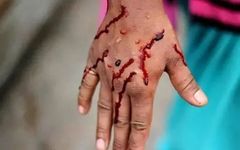| Acupoint Inquiry | Secret Recipe Inquiry | Classics of TCM |
| Meridian Acupoints | Bone Setting and Spinal Adjustment | Traditional Chinese Acupuncture |
| Tui Na Massage | Gua Sha and Cupping | Dong’s Special Acupoints |
| Tongue Diagnosis and Pulse Diagnosis | Pediatric Tui Na | Human Anatomy |
 Main Text
Main Text
Bloodletting, also known as ci xue (刺血), is sometimes referred to as ci luo (刺络) or xue yin shu (血引术). Bloodletting can treat many ailments, especially chronic and severe diseases. The saying goes, “Chronic illness must lead to stasis;” bloodletting can quickly and directly expel the stasis from the patient’s body, often achieving remarkable results. Compared to taking herbal medicine or using massage and heat therapy to invigorate blood circulation and resolve stasis, the efficacy of bloodletting is exponentially faster.
Generally, bloodletting therapy includes methods such as acupoint bloodletting, meridian bloodletting, stasis bloodletting, micro-stasis bloodletting, reflex point bloodletting, distal bloodletting, local A shi point bloodletting, treating upper diseases by bloodletting lower points, and vice versa. Among these, the most commonly used in clinical practice is stasis bloodletting, which typically presents as vascular dilation. However, do not mistake varicose veins for stasis bloodletting points, as that would not yield effective results.
Historically, the most common method of bloodletting was using a san ling zhen (三菱针) to draw blood, which is an ancient traditional method. Other methods include using a mei hua zhen (梅花针) for puncturing and cupping, using a ceramic blade for incisions, or employing leeches for blood extraction. Recently, disposable infusion needles have also been used for bloodletting, each with its unique advantages and characteristics. Generally, the traditional san ling zhen is preferred, as it differs from the effect of round-tipped needles. Using infusion needles for bloodletting is cleaner and less bloody, akin to the difference between plastic vacuum cupping and traditional bamboo fire cupping. Over the years, I have remained steadfast in my preference for bamboo fire cupping, not out of stubbornness, but due to years of clinical practice and personal understanding. Although some may find the san ling zhen method visually intimidating, during the procedure, I feel neither disgust nor fear; my mindset is fearless, focused solely on achieving the best therapeutic effect.
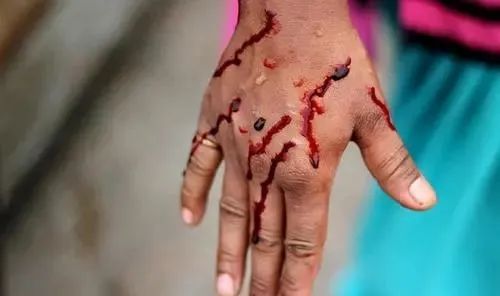
The technique of bloodletting involves a quick puncture, and there are specific techniques for puncturing. The needle must be exceptionally sharp, and the key is speed. If the hand shakes, one can insert six or seven needles in a second, minimizing the patient’s pain. Aside from some painful areas, the most commonly used method is point puncture bloodletting. When puncturing, the technique is crucial; if inexperienced, one can use the middle finger to gauge the depth of the puncture, preventing damage to nerves or blood vessels. My common technique is a quick jab, where the needle tip is pressed against the skin, creating a small pit, and then quickly lifted to puncture, allowing the stasis to flow out. It should be described as sliding in, akin to how an eel slips in, so the patient does not feel pain during the puncture.
Before bloodletting, it is best to wear disposable rubber gloves, which makes the patient feel more secure and protects ourselves. After bloodletting, the gloves can be easily discarded, and hands can be cleaned thoroughly. If puncturing in areas with arteries, one should first palpate to check for pulsation and avoid arterial blood vessels. While there are folk methods for puncturing arteries, it is generally best to avoid arterial puncture for most patients. If the stasis has been present for a long time, the internal pressure is often high, leading to a jetting phenomenon. If the patient is standing during bloodletting, the pressure can be even greater, with blood potentially shooting out several meters. Therefore, beginners should not be alarmed if blood jets out; it is normal.
As long as it is not arterial blood, the bleeding will not have a regular rhythm. However, when internal pressure is too high, venous stasis can also fluctuate with breathing, which is normal and should not cause anxiety. The stasis that jets out will gradually slow down, changing color from black to dark red, brown, red, and finally bright red. I generally judge the amount of blood based on color rather than milliliters. Of course, this requires a thorough understanding of the patient’s physique and condition.
The amount of bloodletting varies; it is not always better to let out more blood. Sometimes, too much can be counterproductive. It should be done moderately, based on clinical experience. Therefore, bloodletting is not as simple as it appears. Similar symptoms may require only a few drops to be effective, while others may need 200 milliliters without effect. With more experience, one gradually learns; typically, 20 to 30 milliliters is common, while up to 200 milliliters may be needed, depending on the patient’s condition and constitution. If the patient has no stasis or is constitutionally deficient in blood, excessive bloodletting can be harmful. It is essential to let out just enough stasis; if not all is released, the effect may not be ideal. After releasing the stasis, it is beneficial to let out a little normal blood to accelerate healing.
Bloodletting in the lumbar and back areas primarily targets reflex points or stasis, often yielding 100 to 200 milliliters of blood with excellent results. After bloodletting with the san ling zhen, it is generally advisable to apply cupping once natural bleeding has stopped, as this can thoroughly remove any remaining stasis from the body. Cupping also has its techniques; it should not be applied cold. I usually ignite an alcohol swab to heat the cup until it is hot but not damaging to the skin, then apply it. Plastic vacuum cups are not recommended; while they may be acceptable for non-medical individuals, as a practitioner, one should avoid such unskilled methods. For effective results, traditional fire cupping is necessary; the term “fire cupping” implies the use of fire, which generates heat, essential for invigorating blood circulation, dispelling cold, and eliminating dampness.
Bloodletting for headaches, whether rheumatic, traumatic, neural, or stasis-related, has shown excellent results. For patients with less visible vessels at the temples, a towel can be placed around the patient’s neck, and they can pull it to compress the carotid artery on the same side, causing the temple vessels to bulge, making it easier to puncture. For headaches, a larger volume of bloodletting is preferable, as patients often report immediate relief and clarity after the procedure. Many practitioners prefer to apply cupping at the temples, but I believe it is best to avoid cupping after bloodletting at the temples, as it can compress the temporal artery, leading to dizziness and discomfort. Allowing the blood to flow out naturally is sufficient; if the puncture is done well and the blood volume is adequate, cupping is unnecessary.
When performing bloodletting, it is best for the practitioner to wear disposable gloves. In this demonstration, I am not wearing gloves for filming purposes. I do not advocate for bare-handed bloodletting due to hygiene concerns; if there are any cuts on the fingers, it can lead to infections. Especially when bloodletting on the head, one inevitably touches the patient’s face, and if blood is on the hands, it can make the patient uncomfortable. Wearing disposable latex gloves provides a good impression for the patient.
Some believe that the san ling zhen method leaves large wounds, is prone to infection, and is unsightly, but these are misconceptions. The san ling zhen method requires skill and must be practiced frequently to master. Many TCM techniques are inherently personal; uniformity does not represent TCM but rather Western medicine. Therefore, those without a solid foundation and practical experience in TCM acupuncture cannot perform it well, which is normal. If everyone could master it easily, it would be unusual for not everyone to become a renowned physician. Some clever individuals may devise quick replication methods to enable students with no foundation to grasp it quickly, primarily to meet the needs of training programs.
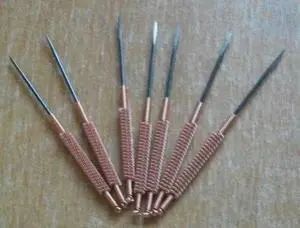
After using the san ling zhen, the puncture marks are minimal, resembling a small red mole on the face, and do not affect aesthetics. After bloodletting, the puncture site should be disinfected with 75% alcohol swabs, which is crucial. We may lack efficacy, but we must not allow infections. Many individual practitioners lack a proper disinfection concept; I have seen many acupuncture colleagues use 95% medical alcohol for disinfection, believing that a higher concentration is more effective. Even for cupping, they often use dark cotton balls dipped in alcohol from a bottle. In fact, 75% ethanol is the most effective for disinfection. I learned many disinfection principles from a chief orthopedic surgeon at Beijing 309 Hospital in 1999, and over the years, I have never had a patient experience infection or inflammation from acupuncture, bloodletting, or similar procedures. After disinfection, applying liquid bandages can prevent infection and swelling, allowing the puncture to heal quickly without pain for the patient.
Bloodletting therapy can be applied to various body parts, including the head, neck, chest, back, waist, abdomen, limbs, and trunk. The selected bloodletting acupoints, aside from painful areas, are often located along the meridians, yielding excellent results. Clinically, many patients have experienced significant recovery from long-standing ailments after bloodletting, often expressing heartfelt gratitude. Specific bloodletting techniques will be briefly introduced later; in reality, learning bloodletting therapy is easy, but mastering it requires guidance from a teacher and extensive clinical practice to improve skills rapidly.
It is worth mentioning that during the bloodletting treatment process, some patients may experience exacerbation or recurrence of symptoms. This phenomenon is akin to snow melting on a sloped surface, where the upper snow slides down. Bloodletting can also cause stasis to flow from the body to the surface. Experiencing pain during treatment is a sign of stasis flowing out. These factors may lead to patients experiencing more severe pain or symptoms that did not occur before treatment. This should not be viewed as a worsening of the disease; rather, it is an “adjustment response” during treatment, which generally improves significantly after a few days. I once treated a farmer with low back pain; after bloodletting, I advised her to return for a follow-up in seven days. The next day, her back pain worsened, but due to transportation difficulties, she endured the pain without seeking medical attention. Surprisingly, three days later, her back pain suddenly improved, and she continued to feel better each day. When she returned for a follow-up after seven days, she reported no pain at all.
Observations of impurities during bloodletting and cupping:
1. Dark black blood indicates a long-standing illness, suggesting stasis has been present for a long time, obstructing the blood vessels.
2. Blood mixed with water indicates rheumatism or liver disease.
3. Blood containing jelly-like mucus indicates dampness and toxins have accumulated for a long time.
4. Light blood indicates inflammation or an early-stage illness. Purple-red blood indicates a new injury.
5. If the extracted fluid resembles wash water, it indicates severe chronic dampness.
6. Clear fluid indicates edema.
7. The presence of blisters indicates excessive dampness.
8. Foamy liquid suggests wind evil.
9. A large volume of blood indicates a longer disease duration.
10. A small volume of blood indicates a shorter disease duration or deeper location.
11. When removing the cup, if one feels a rush of warm air, it indicates heavy damp-heat.
12. Slow bleeding, even after multiple punctures, suggests qi deficiency and blood deficiency.
13. Clear blood that does not coagulate easily indicates blood deficiency.
14. Blood that settles quickly and coagulates easily indicates qi deficiency.
15. If pain decreases during the day but worsens at night, it indicates stasis, necessitating another puncture until relief is achieved.
Bloodletting emergency techniques for stroke:
For a sudden stroke, the patient’s microvessels in the brain are slowly rupturing. If someone has a stroke, do not panic, regardless of where the patient is (bathroom, toilet, or public place). Do not move them hastily, as this may accelerate the rupture of microvessels. Instead, support the patient in a sitting position, preventing further falls. The best emergency method is bloodletting. If a san ling zhen is available, that is best; if not, use a disposable syringe needle, a sewing needle, or a large safety pin. If none of these are available, a piece of glass or a broken dish can be used. Disinfect it by burning it, and if conditions do not allow for disinfection, proceed without it. The key is to act quickly and puncture all ten fingertips (about one centimeter from the nail) to let out blood. If blood does not flow, apply pressure with the hand. Ensure that all ten fingertips bleed (one or two drops each), and within a few minutes, the patient will regain consciousness.
For patients with cerebral hemorrhage (stroke), if they are unconscious, puncture the yin tang (印堂), tai yang (太阳), tai chong (太冲), and all ten fingertips to let out 1-5 drops of blood. If the patient has facial drooping, rub the earlobes until they turn red and puncture them to let out a few drops of blood, which can help them regain consciousness and reduce the severity of paralysis. Remember: if a patient is unconscious for more than 24 hours, the rate of paralysis is over 90%. If it exceeds 72 hours, the rate of paralysis is 100%. This is extremely difficult to treat. Therefore, promoting early consciousness is a priceless secret technique. Once the patient regains consciousness, puncture the da zhui (大椎), qu chi (曲池), and wei zhong (委中) to facilitate rapid recovery. Some patients have recovered significantly after bloodletting emergency treatment, and once they feel normal, they can be sent for further medical examination, ensuring a safe transition from danger. If there are still abnormalities, they can be sent to the hospital for emergency treatment, which will at least expedite their recovery.
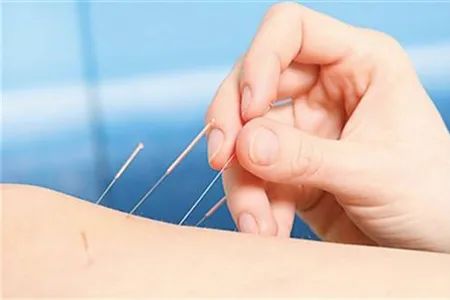
Before puncturing, sterilize the needles by boiling them, and disinfect the puncture site with 75% alcohol. Hold the needle with the thumb, index, and middle fingers of the right hand, while the left hand stabilizes the puncture site. For certain acupoints, the left hand may need to pinch, press, or lift to facilitate locating the bloodletting point.
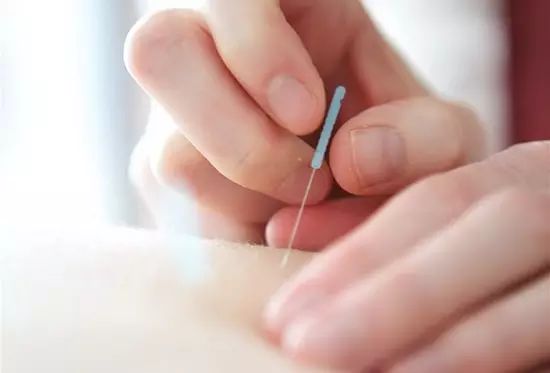
Depending on the condition, various puncturing methods can be selected:
1. Slow puncture: Insert the needle slowly into the vein 0.5-1 cm deep, then slowly let out blood. Suitable for bloodletting in the elbow and popliteal fossa.2. Quick puncture: Quickly insert the needle 0.5-1 cm deep to let out a small amount of blood. Suitable for the twelve jing points and shi xuan (十宣) on the distal limbs.3. Picking puncture: Use a san ling zhen to pierce small veins and let out a small amount of blood. Suitable for the chest, back, and behind the ears. Commonly used for children with gan ji (疳积).4. Surrounding puncture: Puncture around the painful area, generally combined with cupping.5. Cluster puncture: Use a san ling zhen to puncture multiple times in a small area to let out blood. Often combined with cupping.6. Scatter puncture: Also known as leopard spot puncture, used for larger areas or along meridians, often combined with cupping or hand pressure to let out blood.7. Downward puncture: Puncture diagonally from bottom to top, pushing towards the bloodletting point to expel evil blood.8. Upward puncture: Puncture diagonally from top to bottom, pushing blood from the puncture point before puncturing to expel evil qi.
Precautions:
When using the san ling zhen, do not puncture too deeply, and do not let out too much blood. After bloodletting, use an alcohol swab to apply pressure to stop the bleeding. All treatment areas must be thoroughly disinfected to prevent infection. For bloodletting, it can be done once a day or every other day. If bleeding is significant, it can be done twice a week. For qi expulsion, it can be done three times a day, based on skin redness. Cupping should be combined based on skin moisture.
Blood Color Differentiation:
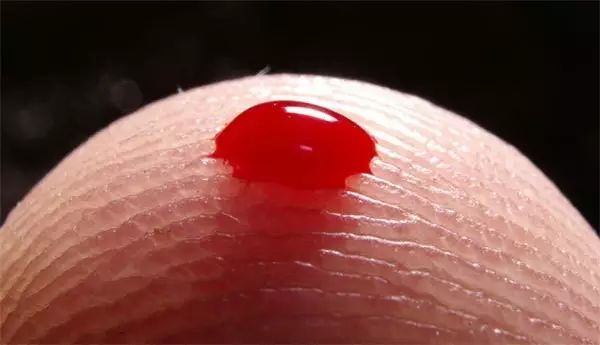
1. Deep red blood: If the blood is deep red after puncturing, it indicates a heat syndrome.
2. Black-red blood: If the blood is black-red, it can indicate either external or internal injury. External injuries are usually at A shi points, often due to qi and blood stagnation, while internal injuries in the limbs are often due to stasis obstructing the meridians.
3. Light red-yellow blood: If the blood is light red-yellow, it often indicates rheumatic conditions.
4. Blue-purple blood: If the blood is blue-purple, it often indicates cold evil entering the body, harming organ function.
Dynamic Blood Differentiation:
1. Clear blood that does not coagulate easily indicates blood deficiency.
2. Blood that settles quickly and coagulates easily indicates qi deficiency.
3. Slow bleeding after puncturing, even after multiple punctures, indicates qi and blood deficiency, with stasis obstructing the organs.
4. Rapid bleeding indicates heat excess. In treatment, focus on expelling qi and blood heat. For those with habitual skin purpura, avoid puncturing or be cautious.
Other Differentiations:
1. Blood with pus: If pus appears at the puncture site, it often indicates internal injury or prolonged internal injury leading to pus formation.
2. Sticky white liquid: If a sticky white liquid is extracted, it often indicates digestive issues in children.
3. White powdery substance: This often indicates long-term stasis obstructing normal blood flow.
4. Clear liquid: This often indicates edema.
5. Water droplets in the cup: This often indicates excessive internal cold dampness.
6. Warm air in the cup: This indicates excessive internal damp-heat.
Bloodletting Therapy for Various Diseases:
1. Coma and Shock: Coma can arise from various causes, such as brain diseases or poisoning. In severe cases, there is no response to strong stimuli, and consciousness is completely lost.
Shock can also arise from many causes, presenting with pale complexion, cold sweat, cold limbs, cyanosis, low blood pressure, weak pulse, and consciousness disturbances. [Treatment] Puncture ren zhong (人中), shi xuan (十宣), and zhong chong (中冲) with a san ling zhen to let out blood. Apply cupping on da zhui (大椎) for 2 minutes. Use a mei hua zhen to puncture along the meridians to let out blood. [Additional Points] Puncture ren zhong, tai yang, bai hui, yong quan, nei guan, and zu san li for bloodletting, with intervals of 1 hour between each.
2. Heat Stroke: Heat stroke typically occurs in summer due to external heat, leading to the depletion of internal yin. For heat stroke patients, quickly move them to a cool, ventilated area, have them lie down, loosen clothing, wipe away sweat, and use a fan to cool them down. If symptoms are severe, such as headache, dizziness, nausea, or vomiting, bloodletting therapy can be employed. [Treatment] Puncture zhong chong, wei zhong, shi xuan with a san ling zhen. Apply cupping on da zhui, ming men, and wei zhong for 2 minutes. Use a mei hua zhen to puncture along the spine to let out blood.
3. Shaking Syndrome: This syndrome often occurs in summer and autumn, characterized by systemic swelling and a feeling of heaviness. It often arises from a deficiency of the body’s righteous qi, allowing external evils to invade, leading to qi and blood stagnation. [Treatment] Puncture shi xuan and wei zhong with a san ling zhen. Puncture the elbow and along the spine with a mei hua zhen to let out blood. Apply cupping on da zhui and ming men for 10 minutes.
4. Electric Shock: For electric shock victims, quickly turn off the power or use an insulated object to separate the power source from the patient. Move the patient to a ventilated area. If mild, they may recover quickly; if severe, with respiratory or cardiac arrest, immediately loosen clothing and perform artificial respiration and chest compressions. Bloodletting therapy can also be employed during artificial respiration. [Treatment] Puncture ren zhong and shi xuan with a san ling zhen. Apply cupping on yong quan and use a mei hua zhen to puncture along the spine to let out blood.
5. Drowning: For drowning victims, place them face down with their feet elevated and head lowered, and perform artificial respiration. Pull out the tongue to prevent it from blocking the airway. Clear any mud, grass, or foam from the mouth and nose to prevent airway obstruction. If the patient has stopped breathing or their heart has stopped, immediately perform mouth-to-mouth artificial respiration and chest compressions, while also employing bloodletting therapy. [Treatment] Puncture ren zhong and hui yin with a san ling zhen. Apply cupping on da zhui, lung shu, and dan zhong for 5 minutes. Use a mei hua zhen to puncture bai hui and yong quan to let out blood.
6. Sudden Death: Sudden death often occurs in individuals without prior illness, collapsing suddenly while sitting, walking, or during emotional outbursts. [Treatment] Puncture ren zhong, shi xuan, and yong quan with a san ling zhen. Apply cupping on da zhui and along the spine for 5 minutes. Use a mei hua zhen to puncture along the head and spine.
7. Snake and Dog Bites: For snake bites, quickly tie a bandage above the wound (about 3-6 cm) to prevent the venom from spreading. Immediately perform bloodletting therapy. [Treatment] Puncture the bite area with a san ling zhen or mei hua zhen to let out blood, applying pressure to promote venom expulsion. [Additional Points] For snake bites, quickly use a sharp object to cut the affected area, then suck out the blood or apply pressure to expel it.
8. Motion Sickness: When patients experience motion sickness, it is best to close their eyes and rest, focusing on their toes, avoiding looking out the window. If caused by poor air circulation, move the patient to a ventilated area, and bloodletting therapy can also be employed. [Treatment] Puncture ren zhong and zu san li with a san ling zhen. Apply cupping on da zhui for 2 minutes. Use a mei hua zhen to puncture along the meridians.
Internal Medicine Bloodletting:
1. Stroke: Patients often have insufficient righteous qi, with imbalances in organ yin and yang, leading to liver and kidney yin deficiency and excessive liver yang. Emotional distress, irregular diet, and phlegm-heat accumulation can lead to sudden unconsciousness. If phlegm and wind obstruct the meridians, it can cause facial drooping and hemiplegia. [Treatment] Puncture ren zhong, shi xuan, and da zhui with a san ling zhen. Apply cupping on ming men for 5 minutes. Use a mei hua zhen to puncture along the neck and back.
2. Headache: Headaches are a subjective symptom caused by external wind-cold, obstructing blood vessels, or by wind-heat invading. Emotional distress can also lead to liver qi stagnation, causing headaches. [Treatment] Puncture tai yang and bai hui with a san ling zhen. Apply cupping on da zhui, feng men, and gan shu for 5 minutes. Use a mei hua zhen to puncture along the forehead and neck.
Insights on Bloodletting:
1. For stroke patients: If they are unconscious, puncture yin tang, tai yang, tai chong, and all ten fingertips to let out 1-5 drops of blood to promote early consciousness and reduce paralysis severity. Remember: if a patient is unconscious for more than 24 hours, the paralysis rate is over 90%. If it exceeds 72 hours, the paralysis rate is 100%. Early consciousness is a priceless secret technique. After regaining consciousness, puncture da zhui, qu chi, and wei zhong for recovery.
2. For bone nerve pain, if it is related to the gallbladder meridian (pain on the outer side of the thighs), carefully check the yang ling quan and feng long points for any dilated blood vessels; if present, bloodletting can lead to recovery.
3. For those prone to carbuncles or abscesses, puncture the heart point after bloodletting.
4. For early-stage conjunctivitis or styes, puncture the tai yang point to let out 7-9 drops of blood, and puncture the middle toe to let out 3-5 drops; this can lead to recovery by the next day.
5. For severe rheumatism in the legs, puncture 3 inches beside the third, fourth, and fifth thoracic vertebrae to see significant effects; many severe cases can recover in 1-2 sessions.
6. For gastric and duodenal ulcers, puncture the blue veins from the inner foot to the outer ankle. For gastric ulcers, look for blood vessels within 0.5 inches above and 2.5 inches below the tiao kou point.
7. For chronic nephritis: (1) Puncture ru shu for yellow fluid; once the yellow fluid is gone, the patient recovers. (2) Puncture around the kidneys. (3) Puncture around the navel (do not puncture the center).
8. For hepatitis, puncture yang jiao, zu san li, qu chi, yang ling quan, and san yin jiao.
9. For liver cirrhosis with ascites, use hepatitis points plus shen shu, yao shu, and tiao kou (0.5 inches above and below).
10. For hemorrhoids, effective points include: (1) chao jiao (inside the mouth) to find the white spot, which can heal in 1-3 sessions. (2) For swollen and ulcerated anal areas, puncture wei zhong to relieve pain.
11. For insomnia: (1) Puncture shen men, xing jian, and zu san li. (2) Puncture da zhui, shen dao, and zhong wan, then apply cupping.
12. For cervical spondylosis, puncture tender points, tian zong, jian zhen, and chi ze.
13. For chest injuries, bloodletting must be performed at da zhui, jian jing, and then at the injury site.
14. For shoulder periarthritis, puncture shen guan (1.5 inches below yang ling quan) and chi ze for immediate effect.
15. For acute and chronic throat diseases, puncture da zhui, ear tip, ear back vein, shaoshang, qu chi, and tai yang to relieve pain.
16. For impotence: (1) Puncture shen shu, fu liu, and guan yuan, then apply cupping for 15 minutes. (2) Puncture san yin jiao, ming men, and apply cupping on shen shu and xue hai.
17. For hypertension: Puncture tai yang, da zhui, ear tip, and qu chi to lower blood pressure immediately. Note: Do not drink water within an hour after bloodletting, as it may reduce efficacy.
18. For asthma: (1) Puncture da zhui, lung shu, feng men, gou ming, and lie que. (2) Apply cupping on zhong fu and da zhui for 15 minutes.
19. For hyperlipidemia: Puncture da zhui, tai yang, yao shu, wei zhong, and qu chi.
20. For rheumatic heart disease: Puncture yang jiao, qu chi, and tai yang.
21. For pterygium: Puncture shao ze, zhi yin, ear tip, and da zhui every other day for a 10-day course.
22. For otitis media: Puncture the outer ankle joint.
23. For epilepsy: (1) Puncture tai yang, qu chi, wei zhong, and yang jiao. (2) Puncture shao shang and ren zhong. (3) Puncture the lower part of the back of the neck and nei guan with a mei hua zhen to let out blood.
24. For mental illness: Puncture tai yang, qu chi, wei zhong, shu chong, yang jiao, feng long, and xin shu, then apply cupping.
25. Back examination points: There should be no prominent blood vessels on the back; if present, it indicates a pathological site. Long-term patients will have black moles on their backs.
The Secrets of Bloodletting:
For diseases that have not healed after prolonged treatment, one should puncture the dilated blood vessels at the ankles, elbows, wrists, and knees, which can yield unexpected results. This is my personal experience.
Bloodletting should generally not be performed at night; midday is preferable.
1. A 52-year-old male patient visited me on December 26, 2009, complaining of discomfort on the right side, especially difficulty turning his neck and waist, with a binding sensation on the right side and headache, with blood pressure at 230/160. I punctured his ear tip, ear back, shi xuan, and shao shang, letting out 1-2 drops of blood. The patient showed significant improvement in neck and waist mobility, with blood pressure dropping to 190/130, and the headache and confusion disappeared. After two days of Western medicine treatment, the patient was able to return to work.
2. On December 30, 2009, an 85-year-old female patient was found after falling outside for about 3 hours. Upon examination, her mouth was drooping to the right, her right eye could not fully close, she was unable to speak, and her left limbs were numb and stiff, while the right side was normal. I instructed her family not to move her. I punctured her shi xuan, shao shang, and ear tip, letting out 2-3 drops of blood, and then she was sent to the hospital. During various examinations at the hospital, her mouth returned to normal, and within about 2 hours, she regained movement in her limbs and only had slight slurring. The patient expressed hunger and ate a bowl of porridge. When I left, she was smiling, and the family’s tension was completely relieved. No medication was used during her hospital stay.
Bloodletting Prohibitions:
The “Bloodletting Prohibition Song” states:
When needling, one must be aware of bloodletting prohibitions,
On the first, second, and third of the lunar month,
On the fourth, fifth, and sixth, and the seventh,
On the eighth, ninth, and tenth,
On the eleventh, twelfth, and thirteenth,
During the twelfth month, especially on the day of the new moon.
This song is based on the lunar calendar to determine bloodletting prohibitions. For example, the first, second, and third of the lunar month are prohibited days. Currently, it is the sixth lunar month (the month of xin wei), so July 27 is a bloodletting prohibition day.
On bloodletting prohibition days and at the end of the lunar month, bloodletting should not be performed, and blood donation is absolutely forbidden, as it can lead to illness. I once knew a male student who fell ill after donating blood during college, requiring hospitalization for about a month each year. This is likely related to the timing. I have often seen people who became ill after donating blood, so everyone must be cautious.
Unique Treatment Methods in Hui Medicine:
Bloodletting methods include:
1. Bloodletting at the center of the eyebrows (印堂穴): The Hui people refer to this as “picking the head.” The doctor sits opposite the patient, using both thumbs to press the center of the eyebrows three times, then pinching the skin at the center of the eyebrows and puncturing to let out blood. This method is suitable for treating wind-cold, headaches, body aches, forehead pain, and aversion to cold.
2. Bloodletting at the temples: The practitioner uses their thumb to stroke the forehead outward three times, then pinches the skin at the temple and punctures to let out a small amount of blood. This method is suitable for treating headaches due to cold and heat, blood stasis headaches, and hypertension headaches.
3. Bloodletting at the yue gu (月国) area: The patient stands with their back to the practitioner, exposing the yue gu area. The practitioner first strikes the area with their palm to expose the superficial veins. Then, at the midline of the yue gu (equivalent to wei zhong), puncture to let out a small amount of blood. This method is used for treating wind-cold, body aches, and abdominal pain.
4. Bloodletting at the elbow: After exposing the elbow, the practitioner strokes down the upper arm three times, then ties a bandage around the arm to engorge the veins. Bloodletting is performed at the elbow vein (equivalent to qu chi). This method is used for treating wind-cold, limb pain, and body aches.
5. Bloodletting at the middle finger: A red thread is tied tightly around the patient’s middle finger. The practitioner punctures the area at the nail or tip of the finger to let out blood. This method is used for treating wind-cold, pediatric ke wu (客忤) syndrome, and hysteria in women.
6. Bloodletting at the outer ear: The patient sits with their back to the practitioner, exposing the outer ear. The practitioner stabilizes the ear and punctures a small vein in the upper third of the ear with a sharp object to let out blood, adjusting the amount based on the severity of the condition. This method is used for treating throat inflammation, tonsillitis, oral ulcers, skin scabies, and neurodermatitis.
7. Bloodletting at the inner ying xiang (迎香) point: A sharp bamboo stick is inserted 0.5 cm into the patient’s nostril, close to the wing of the nose. The practitioner forcefully flicks the nose to let out a small amount of blood. This method is used for treating acute eye inflammation, conjunctivitis, and throat congestion.
8. Bloodletting for joint sprains and hematomas: For local hematomas from sprains, Hui people often use local bloodletting combined with cupping to remove stasis, sometimes using children’s urine to promote blood circulation.

